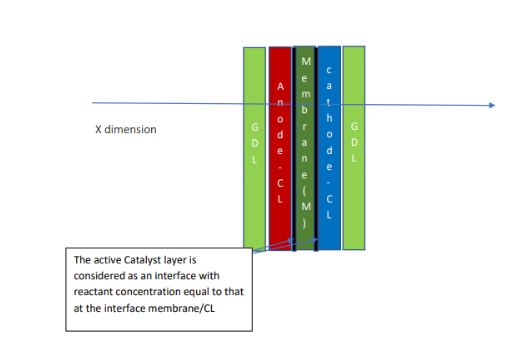CME8131 Electrochemical Energy Conversion and Storage Assignment Question 2025
Specification:
Each student will produce an individual report of maximum of 4000 words and should include appropriate references and diagrams.
CME8131 Assignment Brief
There are some regions in northern Europe (above 54Nº) occupied by a small number of people (1000 persons) which are essentially disconnected from grid supplies of gas and electricity. One way to support their energy needs (heat and electrical power) is to rely on importing bottled gas, for fuel, or petrol/diesel. Such locations often have the potential for large renewable electricity generation (consider wind only due to location) or have excess capacity of renewables. Such renewable energy can be used to provide power and heat for these communities.
Assume average person consumes 5MWh/year of electrical power and 20MWh/year of heat power 90% of which is consumed Nov-Feb. It is suggested that the heating is provided by hydrogen either by burning it in boilers or through its use in combined heat and power system. Assume that one type or multiple types of electrochemical energy storage and conversion are required to balance community variable power use profile and wind generation intermittency (e.g. electrolysis, redox flow batteries, Lithium ion batteries, fuel cells etc).
Your task is to carry out preliminary process design and critical analysis of the power and heat systems for the community. This should include:
CME8131 Question 1
Design a process to produce hydrogen from sea water surrounding the community using renewable wind energy.
- List major system components and use block diagram or simple process flow diagram to show the system.
- Specify the capacity (MW), cost and location of wind power generation, and the hydrogen generation plant and storage (cubic meters), their components and type of technology involved and justify your choices.
- Specify and justify your estimated efficiency of the system.
- The generated hydrogen should be stored until it is used for heat generation on demand by boilers or CHP (assume suitable gas network is in place).
- Make necessary assumptions and state them in your report. It is important to show you have sized the components and justify why you have chosen them.
CME8131 Question 2
Choose one or more electrochemical energy conversion and storage technology to provide electrical power energy conversion/storage needs.
- Specify the size (number of cells) & capacity (kWh or kW), cost and location of the electrochemical energy conversion and storage technologies their components and type of technology involved and justify your choices.
- Specify and justify your estimated efficiency of the system.
- The system you are designing (including wind power in Q1) will be the primary power source of the selected location with no backup power and energy stored should sustain the community for at least 2 weeks of electrical power should there be a loss of renewable energy power or long spell of no wind.
- Make necessary assumptions and state them in your report. It is important to show you have sized the components and justify why you have chosen them.
Are You Looking for Answer of CME8131 Assignment
Order Non Plagiarized Assignment
CME8131 Question 3
A supplier suggested to use direct methanol fuel cell as back up power for some of the critical infrastructure. The system size is 10kW at 70°C and capable of operating for 24hr.
- Produce a simplified model (1 dimension) to predict the cell voltage versus current density behaviour using the operating conditions above and data provided in the Table below.
- Provide simulated data for the variation in anode, cathode and cell potential with current density.
- Determine the size (number of cells and area) of the fuel cell system and the system requirements for fuel and air supply based on the system performance predicted.
Consider:
- Nernst equation to determine OCP and the effects of kinetic and mass transport loss (on both anode and cathode and through both GDL and catalyst layer), ohmic loss & cross-over loss.
- The MEA structure is GDLCatalyst LayerMembraneCatalyst LayerGDL.
- For flow channel mass transport losses assume appropriate conversion.
- System is operating on 1 MEOH and air 1 atm at the cathode.
NB. The catalyst layer does not need to be analysed in terms of the spatial current distribution i.e. variation of current density in catalyst layer with the change of methanol concentration (or oxygen) through the thickness of the catalyst layer. Instead treat the catalyst layer as an interface with the membrane. Ignore methanol drag effect.

| D O2 – CL (diffusion coefficient) | 20*10-4 exp[2436[(1/353)−(1/T)]] cm2s-1 |
| D O2 – GDL at T= 343.15 K | 50 *10-3 cm2s-1 |
| D MEOH – CL | 2.8*10-5 exp[2436[(1/353)−(1/T)]] cm2s-1 |
| D MEOH – GDL at T= 343.15 K | 8.7 *10-5 cm2s-1 |
| D MEOH –M | 4.9*10-6 exp[2436 [(1/333)−(1/T)]] cm2s-1 |
| j0 MEOH at 1M | 9.425*10-3 exp[35570/R[(1/353)−(1/T)]] A cm-2 |
| j0 O2 at O2 =1 atm | 4.222*10-3 exp[73200/R[(1/353)−(1/T)]] A cm-2 |
| T operation | 343.15 K |
| α* n (anode) | 0.5 |
| α* n (cathode) | 0.5 |
| δ GDL (thickness) | 0.015 cm |
| δ CL (thickness each anode and cathode) | 0.0023cm |
| δ M (thickness membrane) | 0.018 cm |
| κ membrane (proton conductivity) at 343.15 K and 100%RH | 0.06 S cm-1 |
| Reaction order with respect to O2 | 1 |
| Reaction order with respect to MEOH (in the range 0.5-3 M) | 0.5 |
Get the Solution of CME8131 Assignment. Hire Experts to solve this assignment Before your Deadline
Order Non Plagiarized Assignment
CME8131 Question 4
Carry out Costing, economic (CAPEX and OPEX) and sustainability appraisal of the design over a period of 30 years. The project should conclude with a clear recommendation on whether to proceed or not and provide the reason behind the recommendations.
Use available data in literature on efficiency, lifetime, and costing. You should consult with specific economic models available for new proposed technologies, if market data is not widely available. Your recommendation should not be based upon economic considerations alone but should also consider carbon emissions, environmental impact, public perception, safety etc. You should directly compare your recommended approach with alternatives (natural gas, diesel or petrol) to demonstrate the advantages and limitations of your solution.
Consider:
- Try to minimise system cost, available investment budget of up to £180m.
- When components lifetime is below 30 years consider replacement of components
- There is CO2 carbon tax @ £130/ tonnes increasingly annually at 10%.
- Consider cost of carbon based fossil fuel electrical power 30p/kWh costs and heating based 9p/kWh and increase annually at 4% (doesn’t include carbon tax).
- Wind capacity factor of 60% for the target location.
Marking Scheme
The following aspects of the report will be evaluated.
| Q | ASPECT | Max Mark Awarded |
|---|---|---|
| 1 | Overall system components list PFD and efficiency | 12 |
| Wind power sizing, location and cost | 5 | |
| Hydrogen system generation and storage design, sizing, cost and choice | 10 | |
| Total for Q1 | 27 | |
| 2 | Technologies selection and justification | 4 |
| technologies size, capacity, cost, location, efficiency etc | 9 | |
| Total for Q2 | 13 | |
| 3 | Anode polarisation model | 12 |
| Cathode polarisation model | 12 | |
| Cell polarisation model | 6 | |
| System sizing (number of cells/area) and fuel/oxidation requirements | 10 | |
| Total for Q3 | 40 | |
| 4 | Costing, economic (CAPEX and OPEX) and sustainability appraisal | 20 |
| Total | 100 | |
Students should be aware of the University regulations with regard to plagiarism. For further clarification students should read section of the MSc handbook and item 46 of the General Regulations

